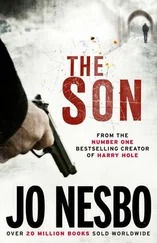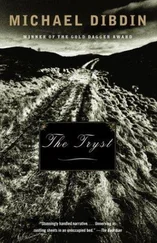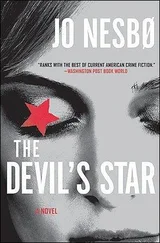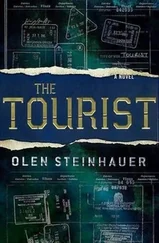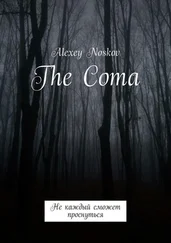Jo Nesbo - The Thirst
Здесь есть возможность читать онлайн «Jo Nesbo - The Thirst» весь текст электронной книги совершенно бесплатно (целиком полную версию без сокращений). В некоторых случаях можно слушать аудио, скачать через торрент в формате fb2 и присутствует краткое содержание. Год выпуска: 2017, ISBN: 2017, Издательство: Random House, Жанр: Триллер, на английском языке. Описание произведения, (предисловие) а так же отзывы посетителей доступны на портале библиотеки ЛибКат.
- Название:The Thirst
- Автор:
- Издательство:Random House
- Жанр:
- Год:2017
- ISBN:9781911215288
- Рейтинг книги:5 / 5. Голосов: 1
-
Избранное:Добавить в избранное
- Отзывы:
-
Ваша оценка:
- 100
- 1
- 2
- 3
- 4
- 5
The Thirst: краткое содержание, описание и аннотация
Предлагаем к чтению аннотацию, описание, краткое содержание или предисловие (зависит от того, что написал сам автор книги «The Thirst»). Если вы не нашли необходимую информацию о книге — напишите в комментариях, мы постараемся отыскать её.
The Thirst — читать онлайн бесплатно полную книгу (весь текст) целиком
Ниже представлен текст книги, разбитый по страницам. Система сохранения места последней прочитанной страницы, позволяет с удобством читать онлайн бесплатно книгу «The Thirst», без необходимости каждый раз заново искать на чём Вы остановились. Поставьте закладку, и сможете в любой момент перейти на страницу, на которой закончили чтение.
Интервал:
Закладка:
‘And this is the first time you’ve done that, here on The Sunday Magazine ?’
‘That’s right. His real name is Valentin Gjertsen, but he’s probably using a different name.’
She saw that the presenter looked a bit disappointed because she’d said the name so quickly, without any build-up. He would clearly have liked to have had time to do a verbal drum roll beforehand.
‘And this is an artist’s impression that shows what he looked like three years ago,’ she said. ‘He’s probably had extensive plastic surgery since then, but it does at least give an idea.’ Katrine held up the picture towards the rows of seats containing the audience of some fifty or so people who, according to the director, were there to give the programme more ‘edge’. Katrine waited, saw the red light of the camera in front of her come on, and let the picture sink in with the people watching at home in their living rooms. The presenter was gazing at her with a look of satisfaction.
‘We would ask anyone with any information to call our hotline,’ she said. ‘This picture, his name and known aliases, as well as our phone number, can all be found on the Oslo Police District website.’
‘And of course it’s urgent,’ the presenter said, addressing the camera. ‘Because there’s a risk that he might strike again as early as this evening.’ He turned to Katrine. ‘At this very moment, even. That’s a possibility, isn’t it?’
Katrine saw that he wanted her help to implant the image of a vampire drinking fresh blood right now.
‘We don’t want to rule anything out,’ she said. That was the phrase Bellman had drummed into her, word for word. He had explained that, unlike ‘we can’t rule anything out’, ‘we don’t want to’ gave the impression that the Oslo Police had a good enough overview of the situation to be able to rule things out, but nonetheless chose not to. ‘But I have received reports suggesting that in the time between the most recent attack and the results of the analysis which has now identified him, Valentin Gjertsen may have left the country. It’s highly plausible that he has a hiding place outside Norway, a place he has been using since his escape from prison four years ago.’
Bellman hadn’t needed to explain this choice of words to her, she was a fast learner. ‘I have received reports’ prompted thoughts of surveillance, secret informants and thorough police work, and the fact that she was talking about a timescale when there would have been plenty of options for flights, trains and ferries didn’t necessarily mean that she was lying. The claim that it was plausible that he had been out of the country was defensible, as long as it wasn’t directly improbable. It also had the advantage of discreetly nudging responsibility for the fact that Valentin Gjertsen hadn’t been caught in the past four years onto ‘outside Norway’.
‘So how do you go about catching a vampirist?’ the presenter said, turning towards the second chair. ‘We’ve brought in Hallstein Smith, a professor of psychology and author of a series of articles about vampirism. Can you answer that for us, Professor Smith?’
Katrine looked at Smith, who had sat down on the third chair off-camera. He was wearing large glasses and a fancy, colourful jacket that looked as if it was home-made. It was in stark contrast to the sombreness of Katrine’s black leather trousers, fitted black jacket and glossy, slicked-back hair. She knew she looked good, and that there would be comments and invitations on their website when she checked later that evening. But she didn’t care, Bellman hadn’t said anything about how to dress. She just hoped that Lien bitch was watching.
‘Er,’ Smith said, smiling dumbly.
Katrine could see that the presenter was worried that the psychologist had frozen and was about to jump in.
‘To start with, I’m not a professor, I’m still working on my PhD. But if I pass, I’ll let you know.’
Laughter.
‘And the articles I’ve written haven’t been published in professional journals, just in dubious magazines dedicated to the more obscure corners of psychology. One of them was called Psycho , after the film. That probably marks the low point of my academic career.’
More laughter.
‘But I am a psychologist,’ he said, turning to the audience. ‘A graduate of Mykolas Romeris University in Vilnius, with grades well above average. And I have got the sort of couch where you can lie and look up at the ceiling for fifteen hundred kroner an hour while I pretend to take notes.’
For a moment it looked like the amused audience and presenter had forgotten the seriousness of the subject. Until Smith brought them back.
‘But I don’t know how to catch vampirists.’
Silence.
‘At least not in general terms. Vampirists are rare, and they come up to the surface even more rarely than that. Let me just point out, to start with, that we need to differentiate between two types of vampirist. One is relatively harmless – people who feel attracted by the myth of the immortal, bloodsucking demigod upon which modern vampire stories such as Dracula are based. This type of vampirism has clear erotic undertones and even drew comment from dear old Sigmund Freud himself. They rarely kill anyone. Then there are people who suffer from what we call clinical vampirism, or Renfield’s syndrome, which means that they’re obsessed with drinking blood. Most of the articles on this subject have been published in journals of forensic psychiatry, because they generally deal with extremely violent crimes. But vampirism as a phenomenon has never been acknowledged within established psychology, it gets rejected as sensationalist, an arena for charlatans. In fact it isn’t even mentioned in psychiatric reference books. Those of us researching vampirism have been accused of inventing a type of human being that doesn’t exist. And for the past three days I have wished that they were right. Unfortunately, they are wrong. Vampires don’t exist, but vampirists do.’
‘How does someone become a vampirist, herr Smith?’
‘Obviously there’s no simple answer to that, but the classic case would start with an incident in childhood in which the subject sees themselves or someone else bleed heavily. Or with them drinking blood. And finding this exciting. That was the case with vampirist and serial killer John George Haigh, for instance, when he was beaten with a hairbrush as punishment by his fanatically religious mother, and licked up the blood afterwards. Later, in puberty, blood becomes a source of sexual excitement. Then the nascent vampirist starts experimenting with blood, often by so-called auto-vampirism, cutting themselves and drinking their own blood. Then at some point they take the decisive step and drink someone else’s blood. It’s also common that after they have drunk a person’s blood, they kill them. By this point they are full-blown vampirists.’
‘And rape, where does that come into it? Elise Hermansen was sexually assaulted, after all.’
‘Well, the experience of power and control speaks very strongly to the adult vampirist. John George Haigh was, for instance, very interested in sex, and said he felt forced to drink his victims’ blood. He used to use a glass, by the way. But I’m fairly certain that for our vampirist here in Oslo, the blood is more important than the sexual assault.’
‘Detective Inspector Bratt?’
‘Er, yes?’
‘Do you agree? Does it seem as if blood is more important than sex for this vampirist?’
‘I have no comment to make about that.’
Katrine saw the presenter take a quick decision and turn back to Smith. Presumably he thought there were richer pickings there.
‘Herr Smith, do vampirists believe that they’re vampires? In other words, that they’re immortal as long as they avoid sunlight, that they can convert others by biting them, and so on?’
Читать дальшеИнтервал:
Закладка:
Похожие книги на «The Thirst»
Представляем Вашему вниманию похожие книги на «The Thirst» списком для выбора. Мы отобрали схожую по названию и смыслу литературу в надежде предоставить читателям больше вариантов отыскать новые, интересные, ещё непрочитанные произведения.
Обсуждение, отзывы о книге «The Thirst» и просто собственные мнения читателей. Оставьте ваши комментарии, напишите, что Вы думаете о произведении, его смысле или главных героях. Укажите что конкретно понравилось, а что нет, и почему Вы так считаете.

